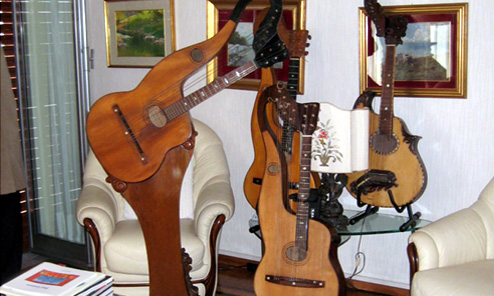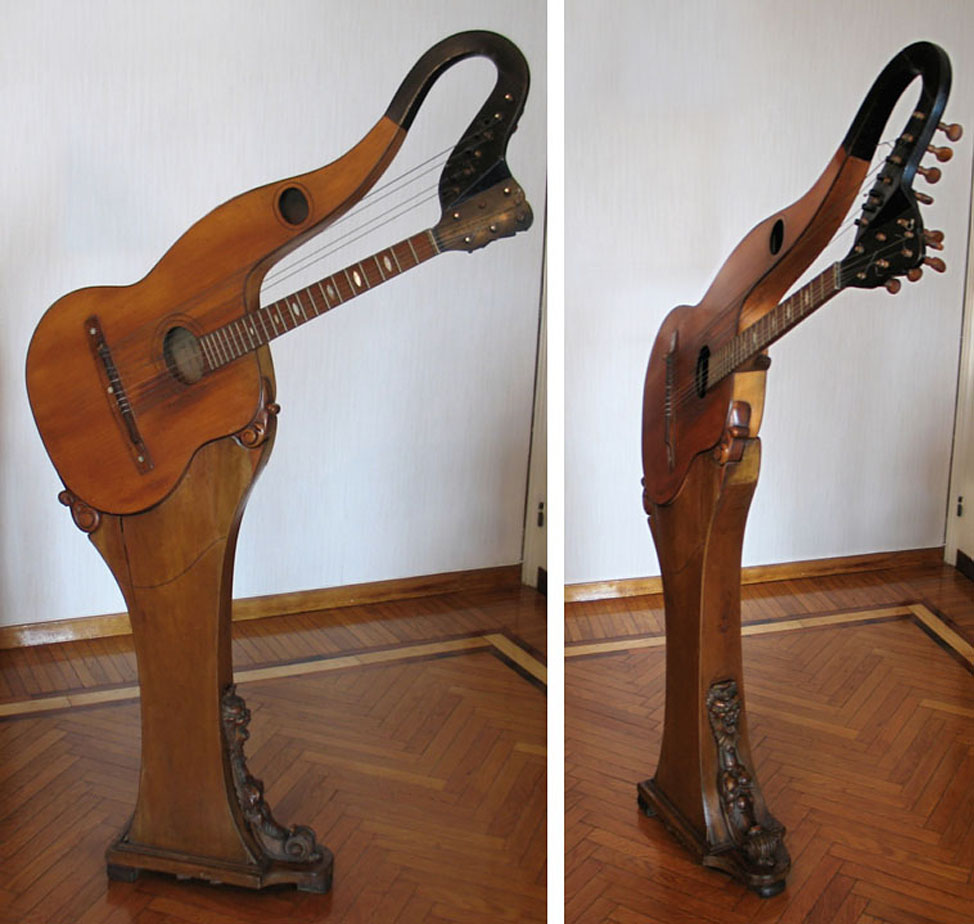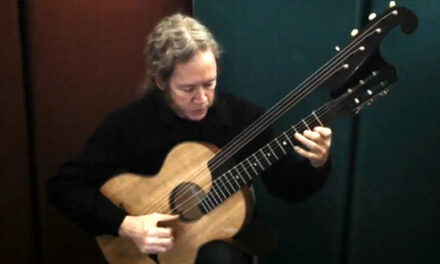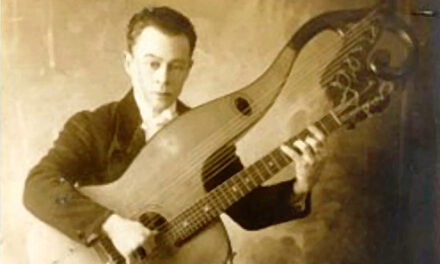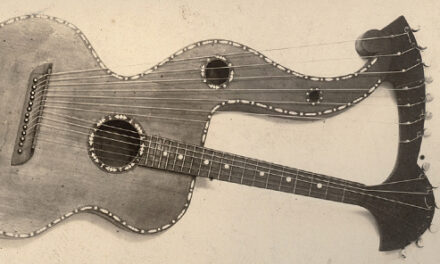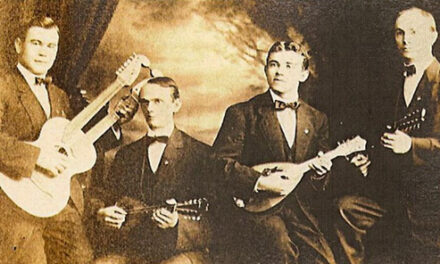Day 2, afternoon: I ended last week’s issue just as we entered Franco’s home.
I immediately turned the corner to the living room to discover:
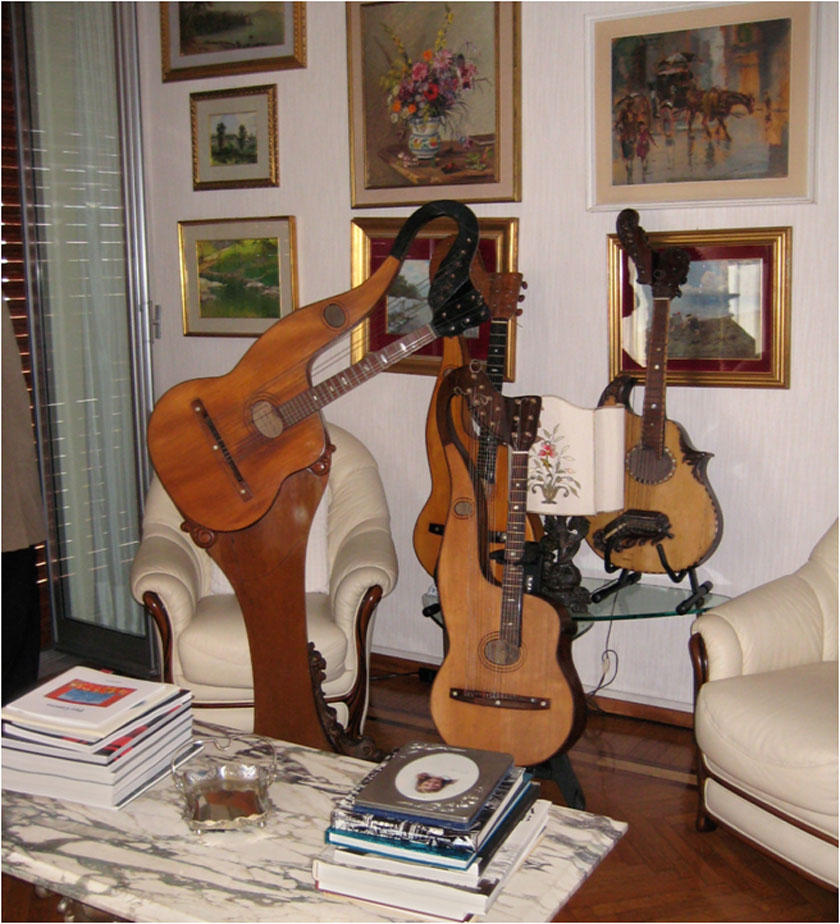
Now I was in Italian harp guitar country! I knew of the 3 Gazzo instruments but didn’t expect them to all be here. But that was because Franco was starting to assemble a few for the exhibit later in the week – something I was just now hearing about.
The real treat was seeing an original Gazzo stand – seemingly identical to Pasquale’s own – “in the flesh” (in the wood?). It’s one thing to drool over in photos, quite another to see it in person (cracks and wormholes and all).
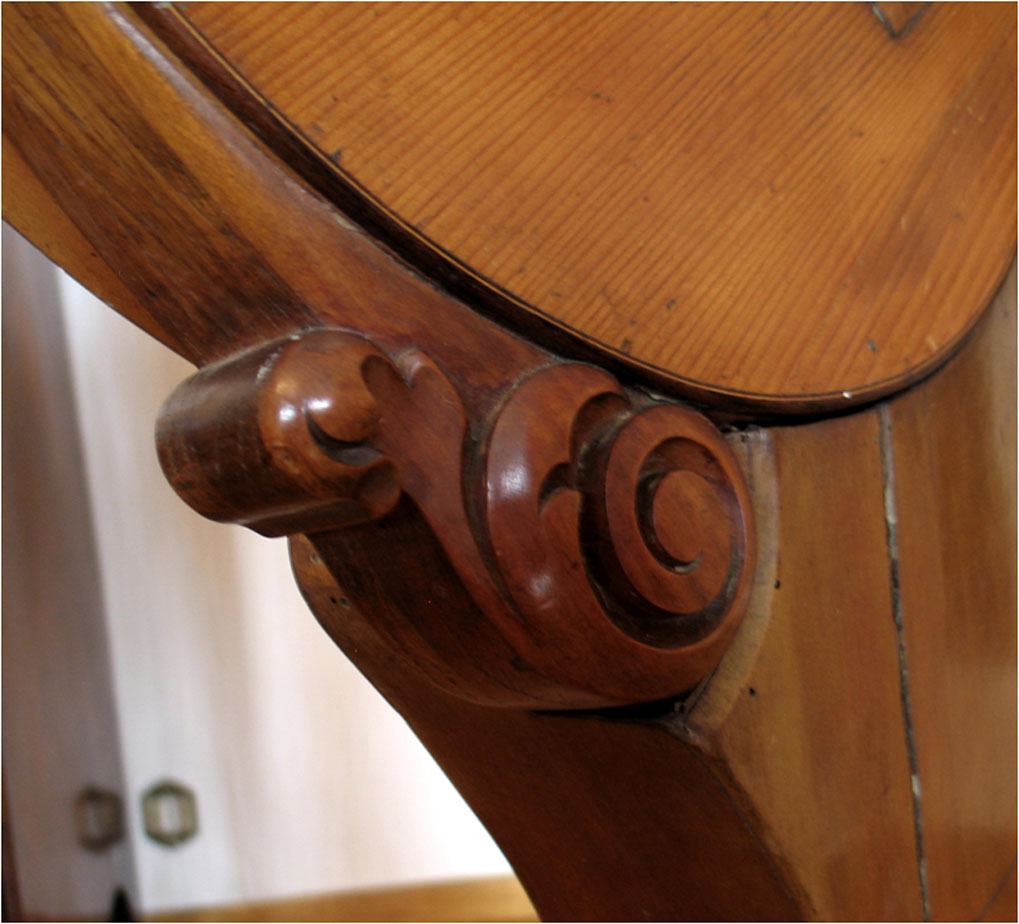
I had no idea how these were attached to the stand. Nothing fancy – just a couple of wood screws drilled into the “feet” of the guitar (the carved walnut extensions) to attach it to the stand from the back.
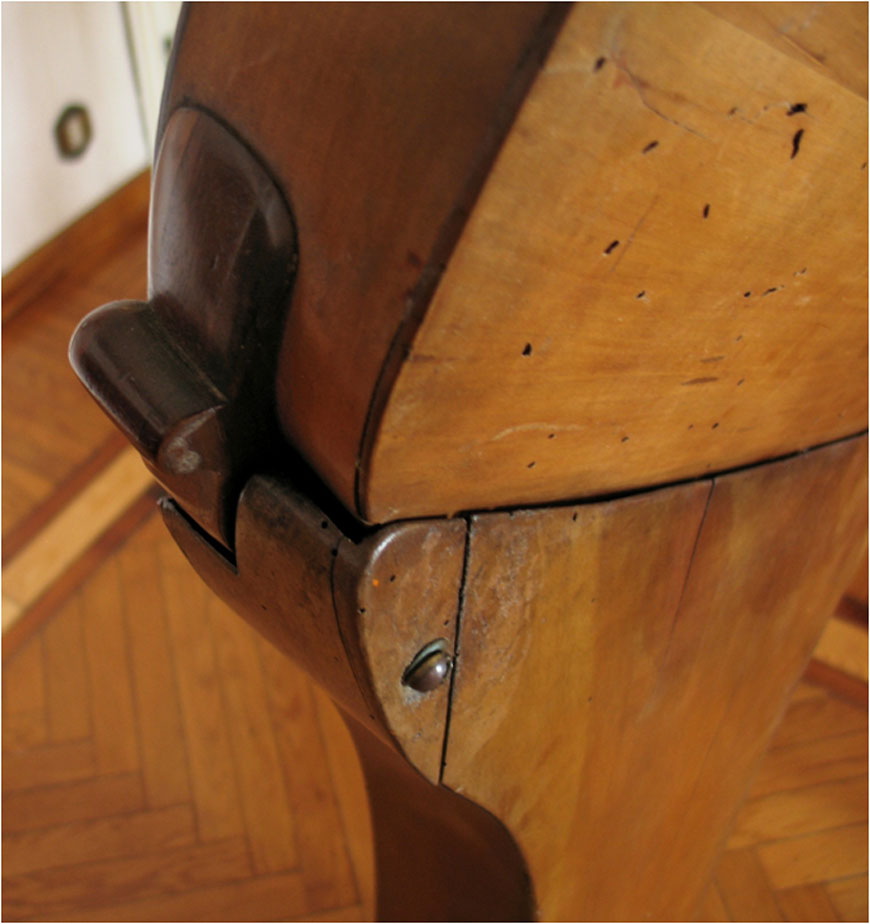
This is Rinaldo Taraffo’s stand and guitar, as far as we have been able to determine. This stand is the one Antonello Saccu copied to build Beppe Gambetta’s modern version. The harp guitar has 6 sub-basses.
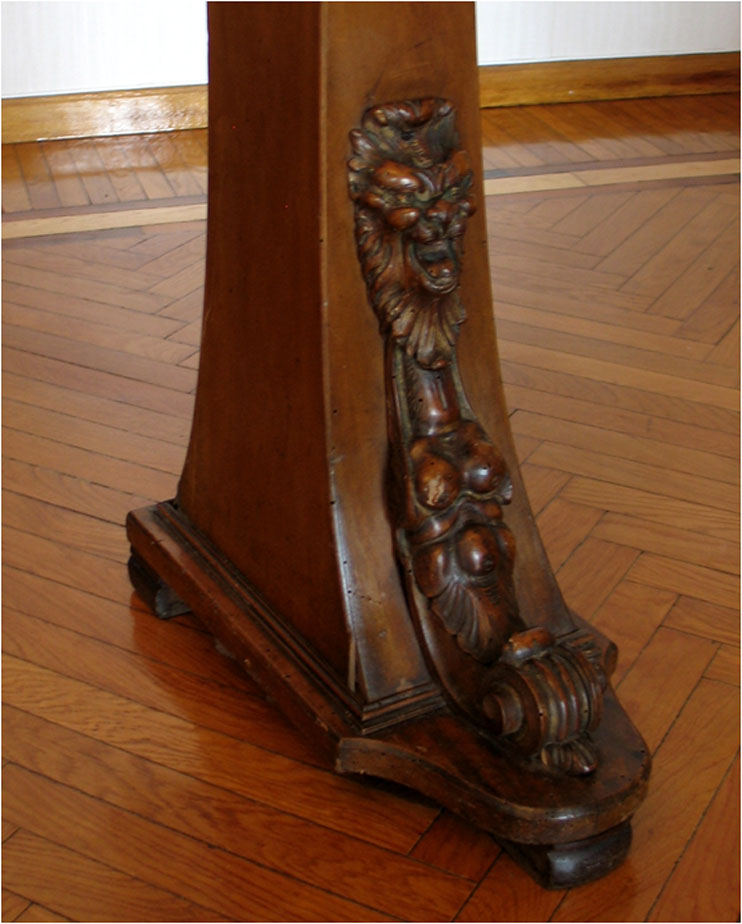
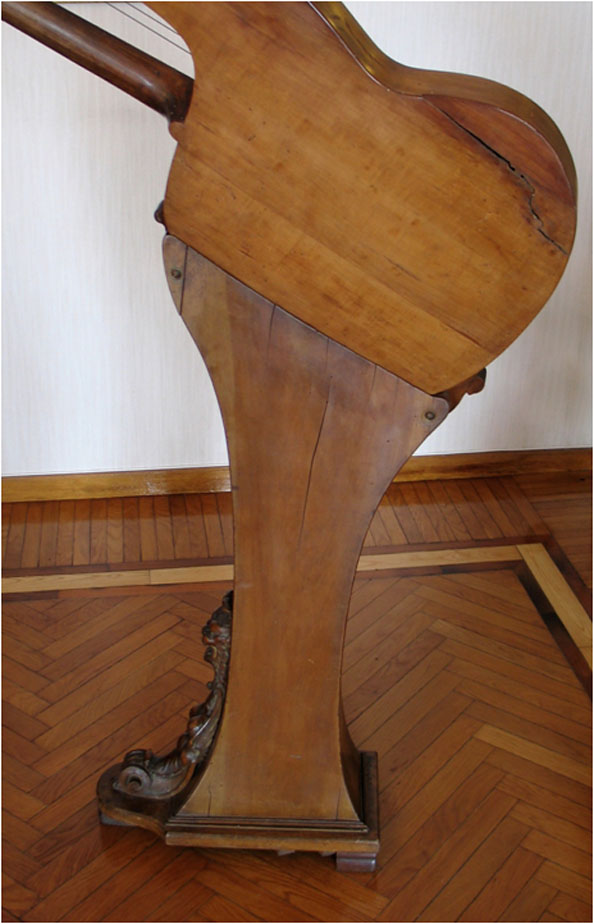
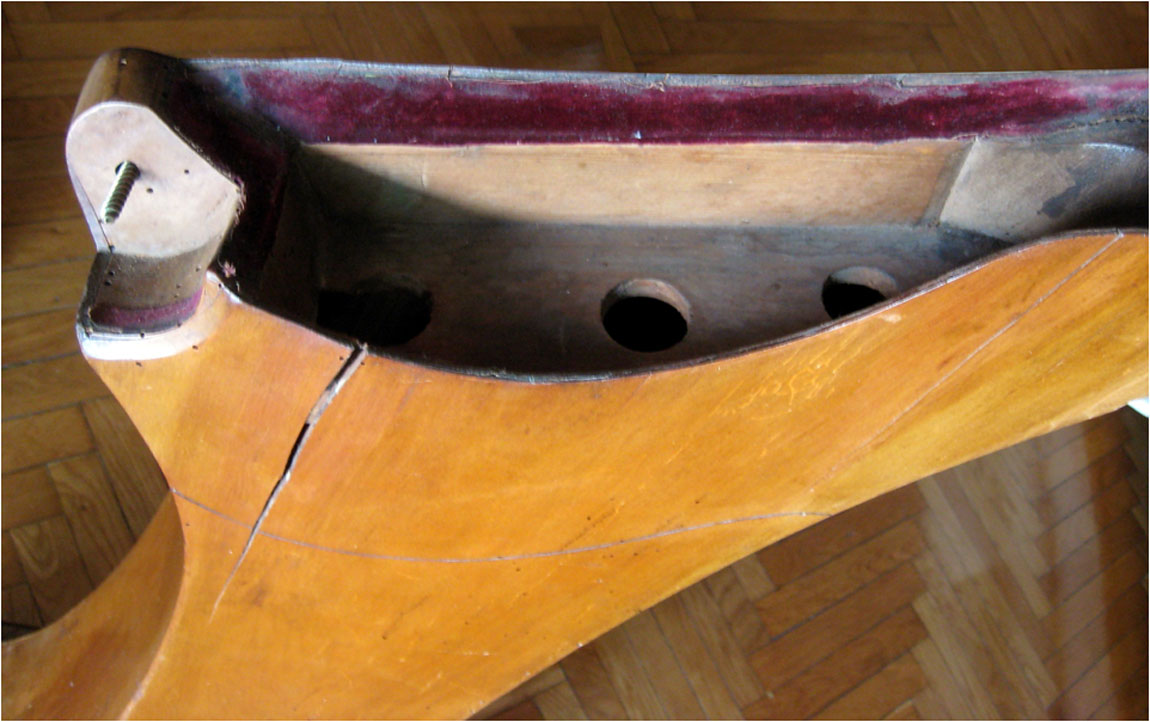
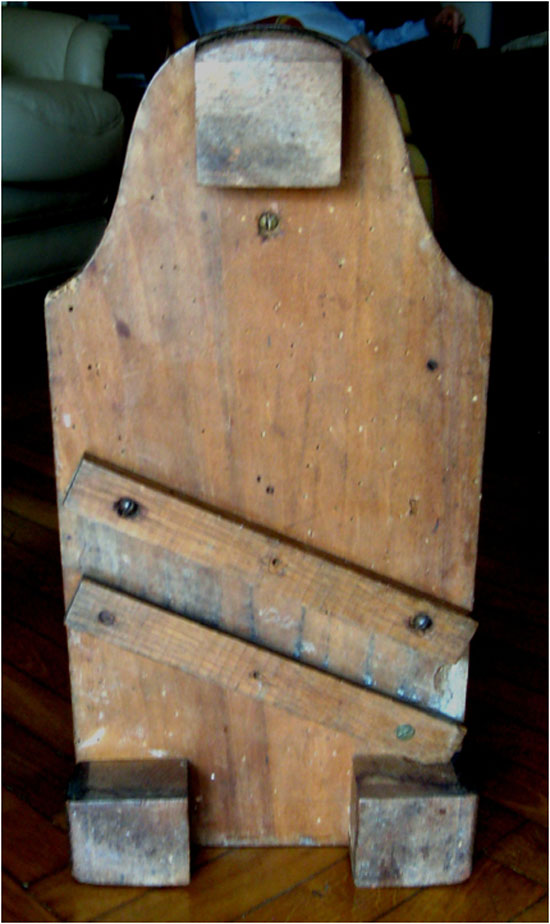
Note the slanted track for the long floor support. Franco thinks this was deliberate in order for the performer to tilt obliquely for playing.
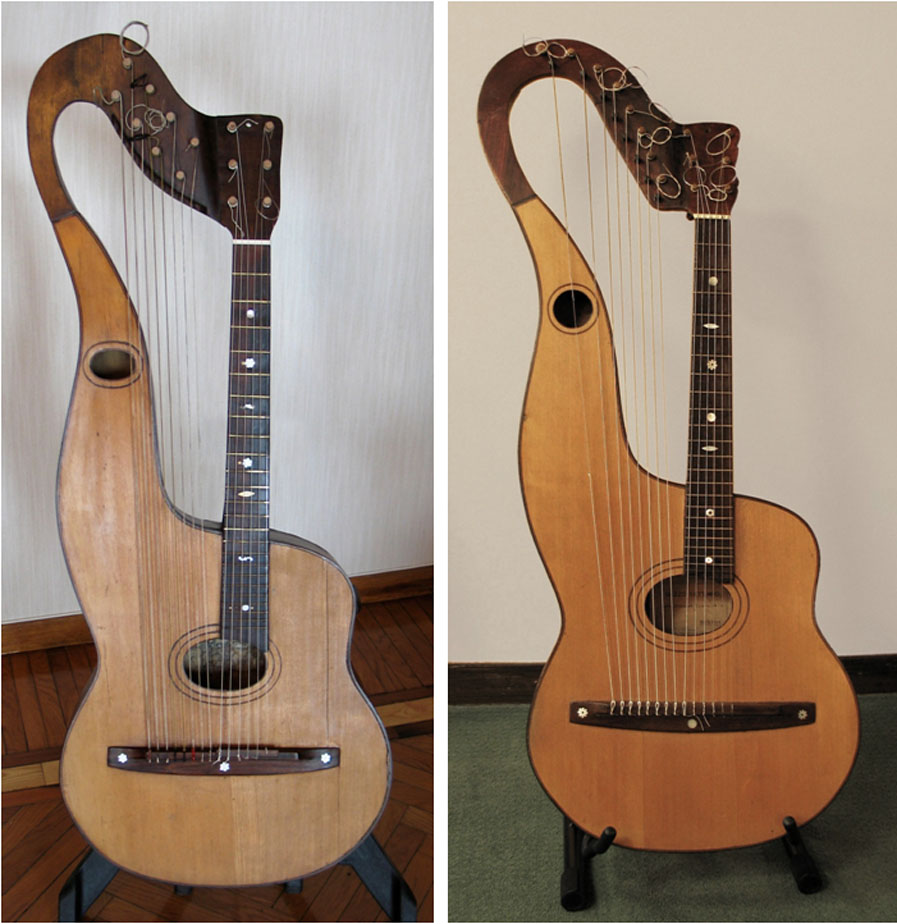
These two Gazzos have 8 subs each – yet note how one has tuners in a line and one stacked. Franco owns the one on the left, which has no specific provenance. The other was once owned by Taraffo disciple Armando Carrara (1904-2006).
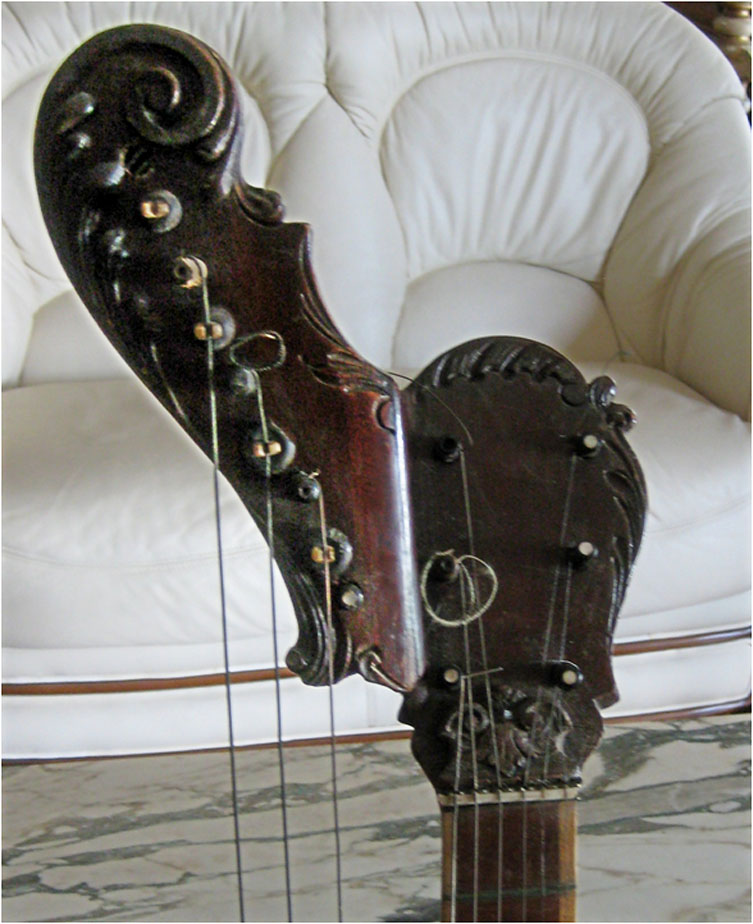
The fascinating theorboed harp guitar (4 subs) has no label, though Franco had his suspicions, which we proved later in the week.
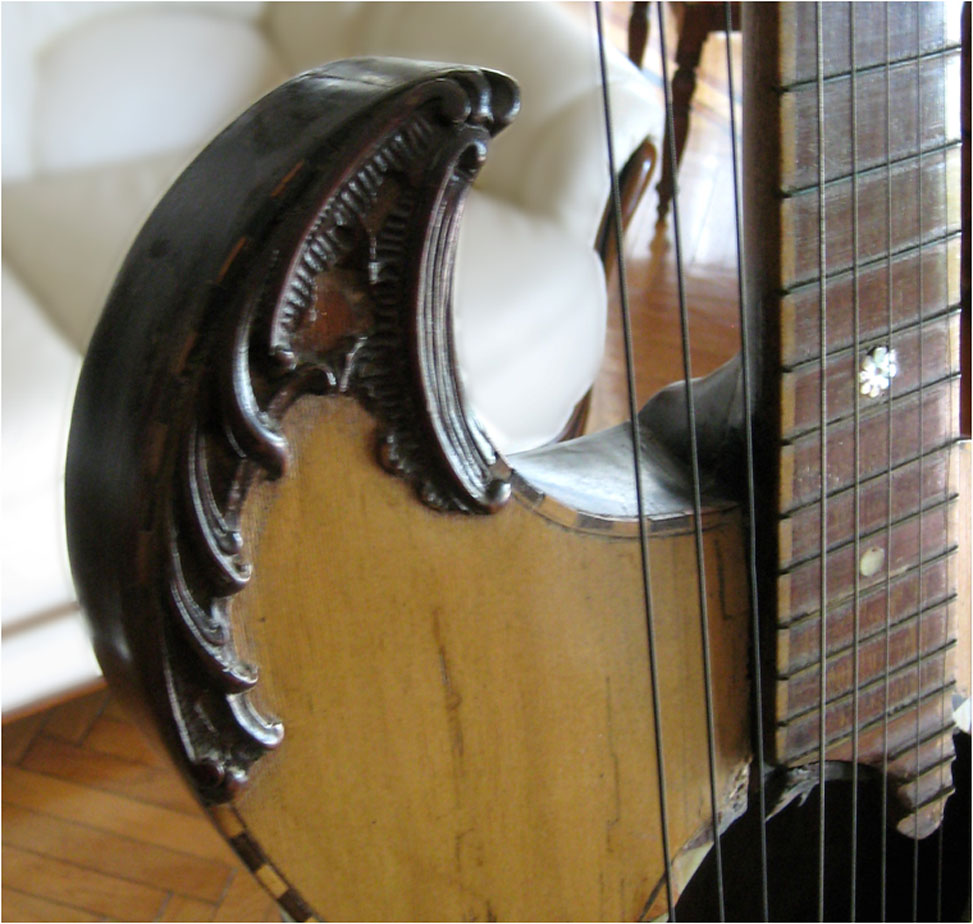
Beautiful carved headstock and also appliqués attached to the body. Note how the last 3 frets are scalloped out.
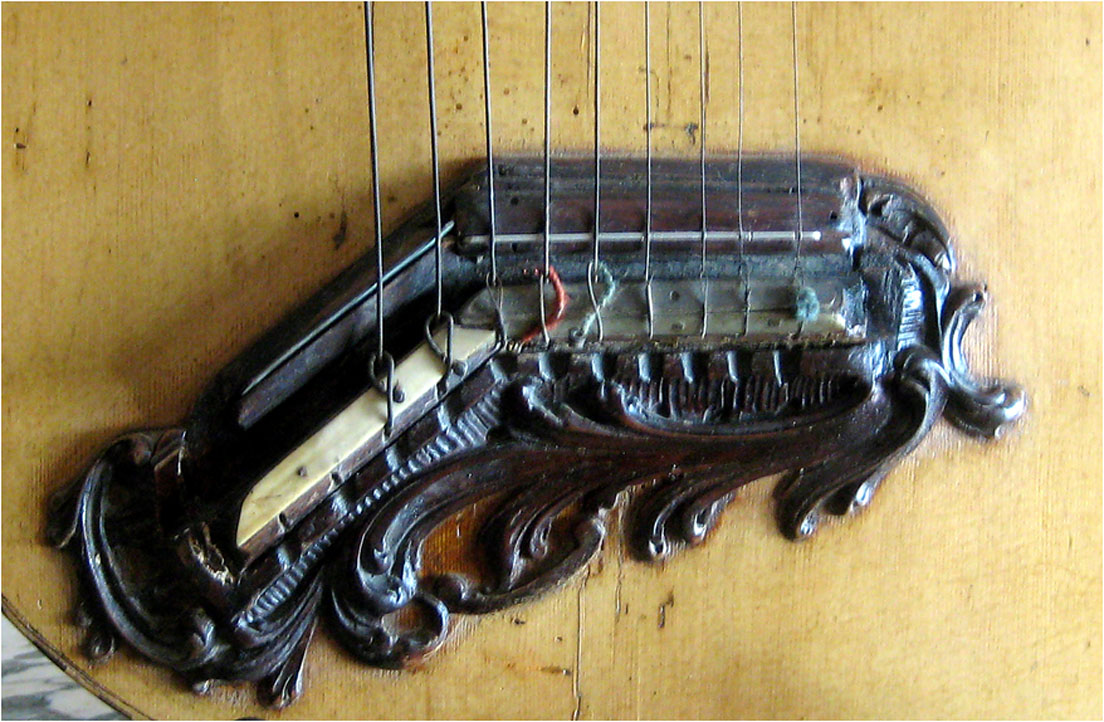
The carved bridge is obviously a bit overboard, as is the large oval soundhole.
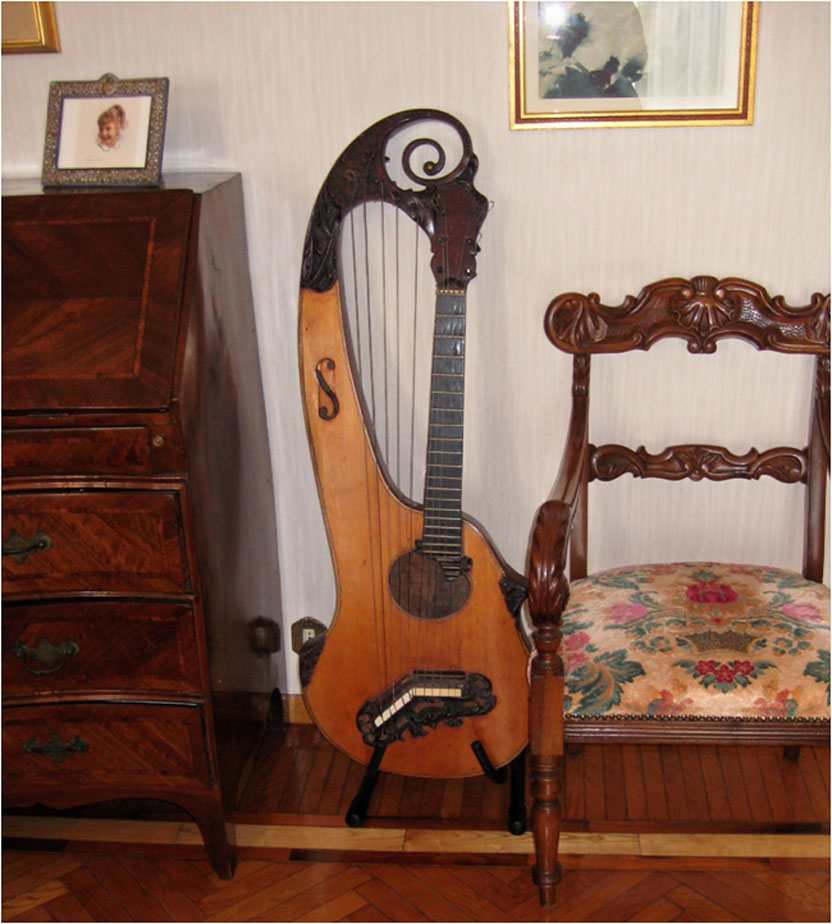
Surprise! Against the other living room wall, this was hiding. It is another, fancier instrument by the same maker. Someone had heard that Franco “collected harp guitars” (c’mon – he had one!), and gave him these two treasures just recently.
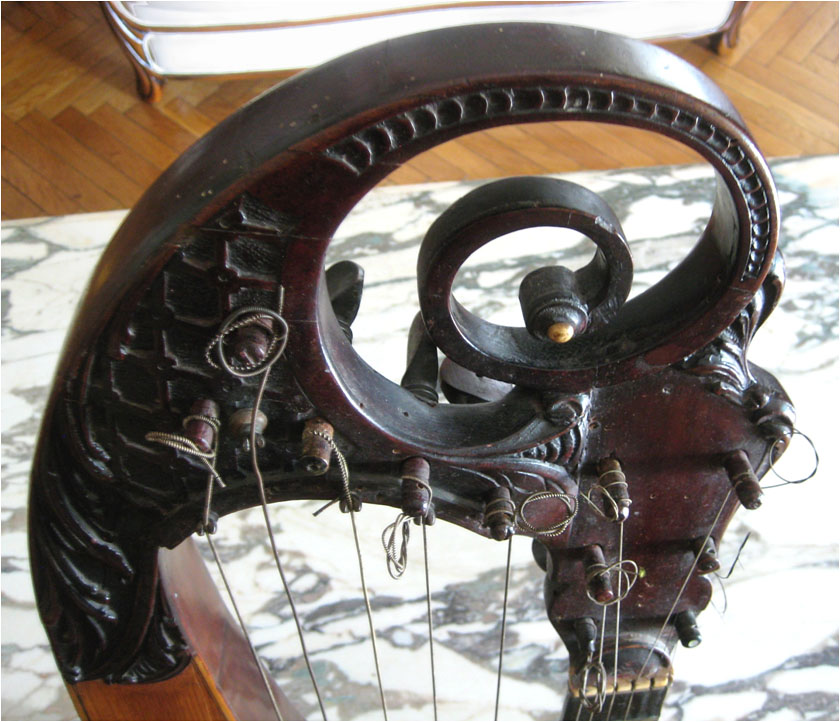
Again, a bit heavy on the bridge…but what an unusual and delicately beautiful headstock design.
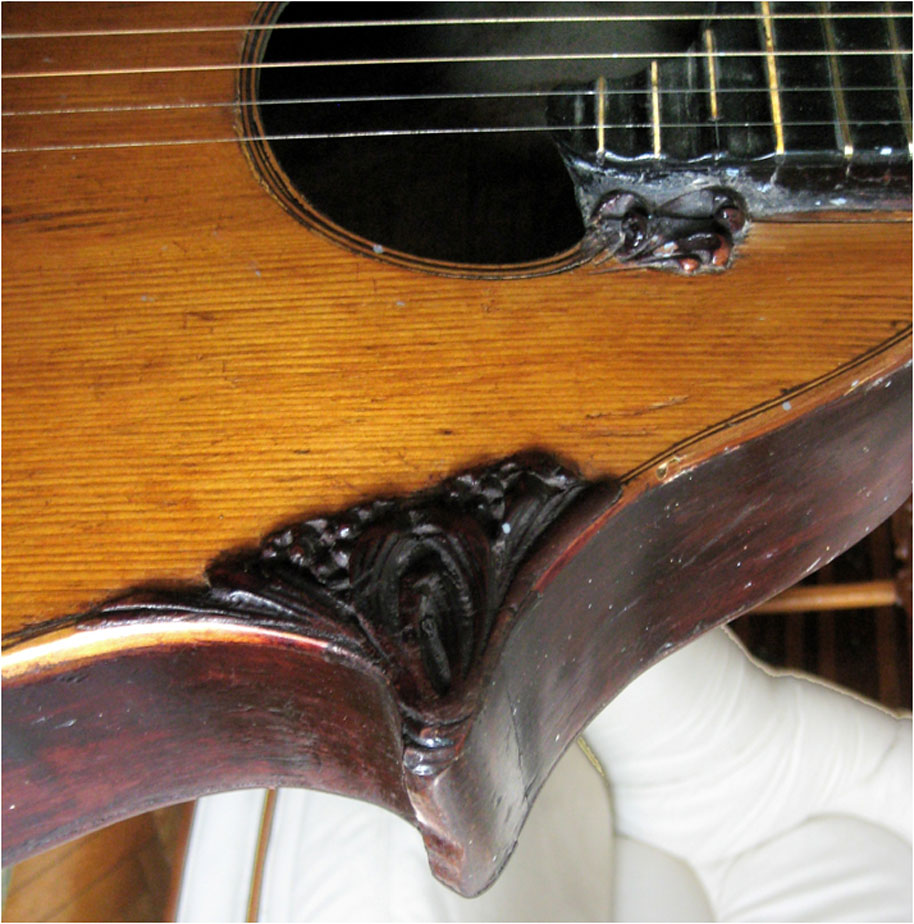
Same high 3 scalloped frets and carved wood appliqués (a pretty cool feature, I have to say).
Who in the world built these two very distinctive instruments? (Stay tuned – in a few weeks, you’ll learn the answer)

